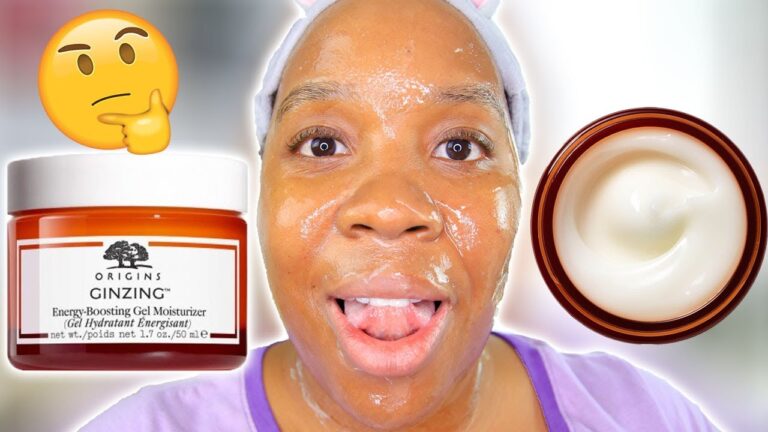The Ultimate Guide to Choosing the Best Lactic Acid Moisturizer for Your Skin Needs
When it comes to skincare, finding the right moisturiser can be a game changer. From oily to dry, there are moisturisers designed for every skin type. One moisturiser that has gained popularity in recent times is the lactic acid moisturiser. Derived from milk, lactic acid has proven to be a gentle yet effective exfoliant and moisturiser, making it a great addition to any skincare routine. In this article, we will dive deeper into what makes lactic acid moisturiser so special, how it works, and what benefits it can offer for your skin.
What is Lactic Acid Moisturiser?
As the name suggests, lactic acid moisturiser is a type of moisturiser that contains lactic acid. This acid is a natural exfoliant and humectant i.e., it gently removes dead skin cells while locking in moisture. Lactic acid is an alpha hydroxy acid (AHA) which is derived from milk. It belongs to the family of AHA’s, along with glycolic acid and citric acid, which are widely used in skin care products.
How Does it Work?
Lactic acid works in two ways – exfoliation and moisturisation. As an exfoliant, it dissolves the bonds between dead skin cells, allowing them to be easily sloughed off. This process unclogs the pores, making them appear smaller and reducing the appearance of fine lines and wrinkles. The exfoliation also stimulates cell turnover, resulting in brighter and smoother skin.
As a moisturiser, lactic acid works by attracting and retaining moisture in the skin. It forms a barrier on the skin’s surface, preventing moisture loss due to evaporation. This barrier also helps protect the skin from environmental stressors like pollution and UV rays.
Benefits of Lactic Acid Moisturiser
Lactic acid moisturiser offers a host of benefits for all skin types. Some of the most notable benefits include:
- Hydration: Lactic acid moisturiser is a great hydrator for the skin. It attracts moisture to the skin, leaving it feeling soft, supple and hydrated.
- Exfoliation: As an exfoliant, lactic acid moisturiser gently removes dead skin cells, unclogs pores, and improves skin texture, leaving the skin looking bright and refreshed.
- Anti-aging: Lactic acid moisturiser can help reduce the appearance of fine lines and wrinkles, as it promotes collagen synthesis, resulting in firmer, smoother skin.
- Brightening: The exfoliating properties of lactic acid help to remove dull, dead skin cells, revealing brighter, more radiant skin.
- Even Tone: Lactic acid can help reduce hyperpigmentation and even out skin tone. It is gentle enough to be used on sensitive skin, making it a great option for those with hyperpigmentation caused by acne or post-inflammatory hyperpigmentation.
How to Use Lactic Acid Moisturiser
Lactic acid moisturisers can be used in the morning and at night, after cleansing and toning. It is important to patch test the product before use to make sure your skin can tolerate it. Start by using the product once a week and gradually increase the frequency as your skin acclimates. When using lactic acid, it is important to use a sunscreen during the day to protect the skin from UV rays, as exfoliants can make the skin more sensitive to the sun.
The Best Lactic Acid Moisturisers
- The Ordinary Lactic Acid 10% + HA: This is a popular option that contains 10% lactic acid and hyaluronic acid, which helps to hydrate the skin.
- REN Clean Skincare Glow Daily Vitamin C Gel Cream: This moisturiser contains lactic acid, as well as vitamin C, which helps to brighten the skin and improve skin tone.
- Paula’s Choice Skin Perfecting 8% AHA Gel Exfoliant: This gel contains 8% glycolic acid and 0.5% salicylic acid, along with lactic acid, making it a powerful exfoliant that can help unclog pores and reduce the appearance of fine lines.
Overall, lactic acid moisturiser is a great option for anyone looking for a gentle yet effective exfoliant and hydrator for their skin. Whether you’re looking to address specific skin concerns or simply want to improve your skin’s texture and appearance, incorporating a lactic acid moisturiser into your skincare routine could be just what you need.
Contents
Most searched products:
Does Sephora Support Israel? Answering Your Questions
The Ultimate Guide to Azealic Acid: Benefits, Uses, and Side Effects
How Long Does Glycolic Acid Take to Show Results: Your Ultimate Guide
Discover the Benefits of The Ordinary Botox for Your Skin
The Perfect Order: When to Use Retinol and Niacinamide in Your Skincare Routine
The Ultimate Reviews of The Ordinary Peeling Solution
Say Goodbye to B.O with Glycolic Acid Deodorant: The Secret to Long-Lasting Freshness
Say Goodbye to Dry Lips with the Best Skin Lip Balms
Benzoyl Peroxide Boots
Get a Cleaner Home with these Proven Cleanswr Hacks















